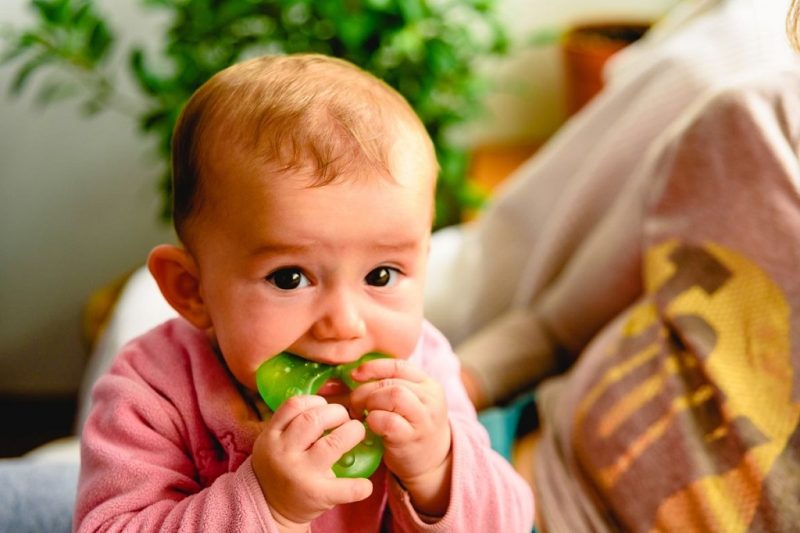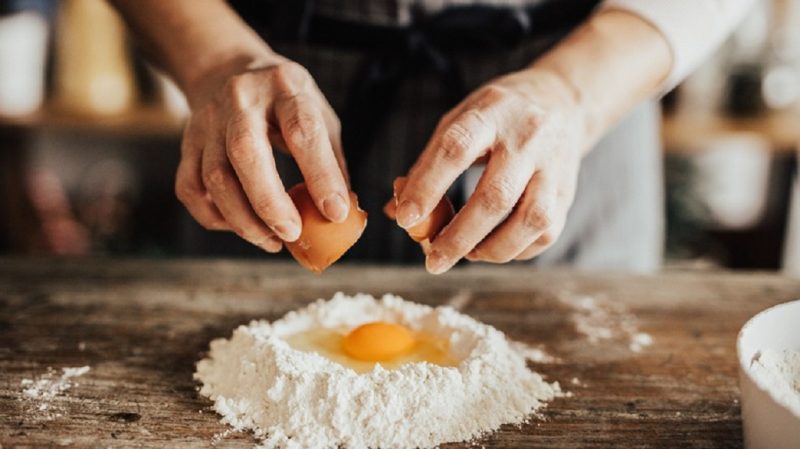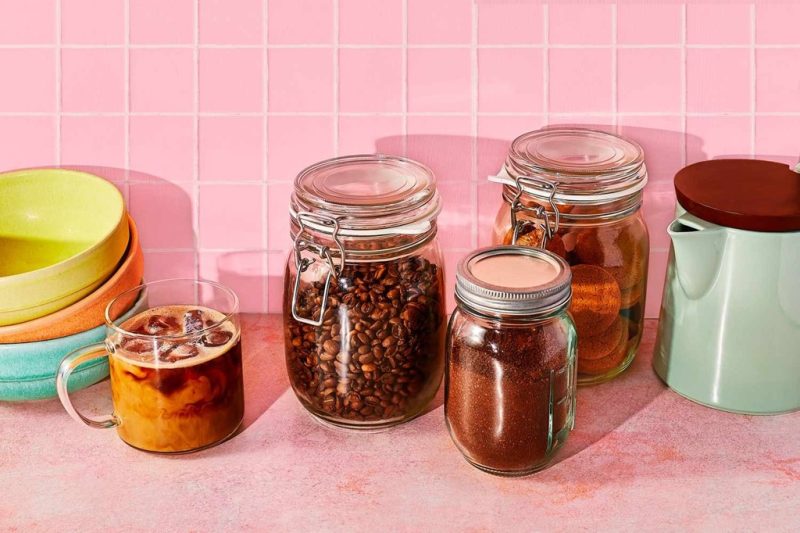Nothing beats a chilled glass of tamarindo agua fresca on a hot day. This tangy, sweet Mexican beverage, made from tamarind pulp, is a crowd-pleaser at gatherings or a perfect treat for home cooks. Known for its vibrant flavor, tamarind water blends the tartness of tamarind fruit with a touch of sweetness, creating a drink that’s both refreshing and unique. Whether you’re new to Mexican cuisine or a seasoned fan, making this drink from pulp is simple and rewarding.Continue reading →
Top Home Remedies for Teething That Every Parent Should Know
Teething is a milestone every baby experiences, often accompanied by discomfort, fussiness, and sleepless nights for both the child and parents. As those first teeth push through tender gums, finding safe and effective ways to soothe your little one becomes a priority. Home remedies for teething offer natural, gentle solutions that can ease pain without relying on medications. These time-tested methods, often rooted in tradition, provide relief using everyday items found in most households. From chilled washcloths to herbal teas, parents can explore a range of options to comfort their teething baby. This article dives into the most effective home remedies, answering common questions parents ask when navigating this challenging phase. Backed by practical insights and expert advice, these solutions are designed to be safe, accessible, and easy to implement, helping you support your baby with confidence.
What Are the Best Home Remedies for Teething Pain?
Snippet Answer: The best home remedies for teething pain include chilled washcloths, cold fruit purees, wooden teethers, chamomile tea, and gentle gum massage, all of which are safe and effective for soothing a baby’s discomfort.
Teething pain can make babies irritable, and parents often seek natural ways to provide relief. One excellent resource, Secret Home Remedies, highlights traditional approaches that have helped generations of parents. Let’s explore the most reliable options in detail, focusing on their benefits, safety, and how to use them effectively.
First, a chilled washcloth is a simple yet powerful remedy. Wet a clean, soft cloth, wring it out, and place it in the refrigerator for 20–30 minutes. Once cooled, let your baby chew on it. The cold temperature numbs the gums, reducing inflammation, while the texture provides gentle stimulation. Ensure the cloth is clean to avoid introducing bacteria. This method is cost-effective and safe for babies as young as six months, when teething typically begins.
Another option is offering cold fruit purees or foods. If your baby is old enough for solids (usually around six months), try giving them chilled applesauce or mashed banana straight from the fridge. The coolness soothes sore gums, and the natural sweetness can distract from discomfort. Always supervise to prevent choking, and avoid sugary foods that could harm emerging teeth. According to the American Academy of Pediatrics, cold foods are a safe way to ease teething pain, provided they’re age-appropriate.
Wooden or silicone teethers are also highly effective. Unlike plastic, natural wooden teethers are free from harmful chemicals and provide a firm surface for babies to chew on. Look for untreated, organic wood or food-grade silicone options. Some parents freeze these teethers for added relief, but avoid freezing them solid, as this can make them too hard and potentially hurt delicate gums. Regularly clean teethers to maintain hygiene.
Chamomile tea, diluted and chilled, is another gentle remedy. Known for its calming properties, chamomile can reduce inflammation and relax a fussy baby. Brew a weak tea, let it cool, and either dab it on the gums with a clean finger or offer a small amount in a sippy cup for older babies. Consult a pediatrician before introducing herbal remedies, especially for infants under one year, to ensure safety.
Finally, a gentle gum massage can work wonders. Using a clean finger, lightly rub your baby’s gums in circular motions. This pressure can alleviate pain and provide a comforting distraction. Wash your hands thoroughly to avoid introducing germs. While these remedies are simple, their effectiveness lies in their ability to address pain directly at the source.
Are Home Remedies for Teething Safe for Babies?
Snippet Answer: Most home remedies for teething, like chilled washcloths, gum massages, and food-grade teethers, are safe for babies when used properly, but always supervise and consult a pediatrician for infants under one year.
Safety is a top concern for parents when trying home remedies for teething. While natural solutions are appealing, not all are suitable for every baby. The key is to choose remedies that are age-appropriate and free from risks like choking or allergic reactions. For instance, chilled washcloths and silicone teethers pose minimal risk when used under supervision. However, parents must ensure items are clean and free from small parts that could break off.
Herbal remedies, like chamomile tea, require extra caution. Although chamomile is generally safe, it can cause allergic reactions in some babies, particularly those with sensitivities to plants like ragweed. The National Center for Complementary and Integrative Health notes that chamomile is safe in small amounts, but overuse or improper dilution can lead to issues. Always dilute herbal teas and limit their use to small, occasional doses.
Foods like cold purees are safe for babies who have started solids, but introducing new foods during teething can sometimes lead to digestive upset. Stick to familiar, simple purees to avoid overwhelming your baby’s system. Additionally, avoid remedies like honey or whiskey, which are unsafe for infants. Honey can cause botulism in babies under one year, and alcohol is never safe for children.
Supervision is critical for all remedies. Even seemingly harmless items like teethers can become a choking hazard if not used correctly. Regularly inspect teethers for wear and tear, and never leave a baby unattended with any object. Consulting a pediatrician before trying new remedies, especially for younger infants, ensures you’re making safe choices tailored to your baby’s needs.
How Can Parents Make Teething Easier for Their Baby?
Snippet Answer: Parents can make teething easier by using home remedies like cold compresses, offering safe chew toys, maintaining a calm environment, and providing extra comfort through cuddles and distraction techniques.
Teething can be as stressful for parents as it is for babies, but creating a soothing environment can make a big difference. Beyond specific remedies, a holistic approach that combines physical relief with emotional support helps ease the process. Start by maintaining a consistent routine, as familiarity can reduce a baby’s stress during this uncomfortable phase.
Offering safe chew toys is a practical step. Babies naturally want to chew to relieve gum pressure, so providing a variety of textures—like soft silicone or firm wooden teethers—keeps them engaged. Rotate toys to maintain interest, and always clean them after use to prevent bacterial buildup. Additionally, consider using a pacifier if your baby is accustomed to one, as sucking can provide comfort.
Creating a calm environment is equally important. Teething babies are often fussy, so dimming lights, playing soft music, or rocking them gently can help them relax. Distraction techniques, like reading a favorite book or playing with a toy, can shift their focus from pain. Extra cuddles and skin-to-skin contact also provide emotional reassurance, which can reduce crying and irritability.
Parents should also monitor their baby’s overall health during teething. While mild symptoms like drooling and irritability are normal, high fevers or diarrhea may indicate another issue. If symptoms seem severe, consult a pediatrician promptly. Combining home remedies with a nurturing approach creates a supportive environment that helps both baby and parent navigate teething more comfortably.
What Should Parents Avoid When Using Home Remedies for Teething?
Snippet Answer: Parents should avoid unsafe teething remedies like honey, alcohol, amber necklaces, or frozen teethers, as these can pose risks like botulism, choking, or gum injury.
While many home remedies for teething are safe, some common practices can be harmful. Understanding what to avoid is just as important as knowing what to try. For example, honey is a traditional remedy in some cultures, but it’s dangerous for babies under one year due to the risk of botulism, a rare but serious illness. Similarly, old wives’ tales about using whiskey or other alcohols to rub on gums are not only ineffective but also toxic for infants.
Amber teething necklaces are another popular but risky option. Marketed as a natural pain reliever, these necklaces pose a significant choking and strangulation hazard. The American Academy of Pediatrics strongly advises against their use, citing no scientific evidence to support their effectiveness. Instead, stick to remedies with proven safety, like those recommended by trusted sources like Secret Home Remedies.
Frozen teethers, while tempting, can also be problematic. Freezing makes them too hard, potentially injuring sensitive gums or causing frostbite-like irritation. Opt for refrigerated items instead, which provide a safe level of coolness. Overusing herbal remedies without pediatrician approval is another pitfall. Even natural ingredients can cause reactions if used excessively or incorrectly.
Finally, avoid over-the-counter teething gels unless prescribed by a doctor. Some gels contain ingredients like benzocaine, which can cause rare but serious side effects in infants. By steering clear of these risks and focusing on safe, evidence-based remedies, parents can protect their baby while providing effective relief.
How Long Do Teething Symptoms Last, and When Should Parents Seek Help?
Snippet Answer: Teething symptoms typically last a few days to a week per tooth, but parents should seek help if symptoms like high fever, severe pain, or prolonged irritability persist.
Teething is a prolonged process, with most babies getting their first tooth between 6 and 12 months and continuing until age three. Each tooth’s eruption can cause discomfort for a few days to a week, though some babies experience longer or shorter periods. Symptoms like drooling, gum swelling, and mild fussiness are normal, but parents should stay vigilant for signs that something else might be wrong.
If a baby develops a fever above 100.4°F (38°C), experiences severe pain that doesn’t respond to home remedies, or shows symptoms like diarrhea or vomiting, it’s time to consult a pediatrician. These could indicate an infection or other health issue unrelated to teething. Prolonged irritability or refusal to eat also warrants a professional evaluation to rule out underlying problems.
Tracking symptoms can help parents distinguish between normal teething and potential concerns. Keep a log of when symptoms start, their intensity, and how long they last. This information can help your doctor assess whether home remedies are sufficient or if further intervention is needed. Most teething episodes resolve on their own, but staying proactive ensures your baby’s health and comfort.
Conclusion
Navigating teething can feel overwhelming, but home remedies offer practical, natural ways to ease your baby’s discomfort. From chilled washcloths to gentle gum massages, these solutions are accessible, safe, and effective when used correctly. By understanding what works, what to avoid, and when to seek help, parents can confidently support their little one through this developmental milestone. Resources like Secret Home Remedies provide valuable insights into time-tested methods, empowering you to make informed choices. Try incorporating one or two remedies at a time, observe how your baby responds, and consult a pediatrician if you’re unsure. What’s your go-to teething remedy? Share your tips or questions below, and let’s help each other make teething a little easier for our babies!
Read More Also: The Mayan Pumpkin Seed Dip You’ll Love
Frequently Asked Questions
What are the safest home remedies for teething?
Answer: Safe home remedies include chilled washcloths, food-grade silicone teethers, cold fruit purees, diluted chamomile tea, and gentle gum massages, all used under supervision.
These remedies are low-risk and effective for most babies. Always ensure items are clean, age-appropriate, and used with caution to avoid choking or allergic reactions.
Can I use frozen items to soothe teething pain?
Answer: Avoid frozen items, as they can be too hard and harm gums; instead, use refrigerated items like washcloths or teethers for safe cooling.
Refrigerated items provide enough coolness to numb pain without risking injury. Check the temperature before giving them to your baby to ensure comfort.
Is chamomile tea safe for teething babies?
Answer: Diluted, cooled chamomile tea can be safe for teething babies over six months, but consult a pediatrician first to rule out allergies.
Chamomile has calming properties, but overuse or allergies can cause issues. Use sparingly and monitor for reactions like rash or fussiness.
Why are amber teething necklaces unsafe?
Answer: Amber teething necklaces pose choking and strangulation risks and lack scientific evidence for pain relief, making them unsafe for babies.
The American Academy of Pediatrics advises against them due to safety concerns. Opt for proven remedies like teethers or cold compresses instead.
When should I call a doctor about teething?
Answer: Call a doctor if your baby has a fever over 100.4°F, severe pain, prolonged irritability, or symptoms like diarrhea that don’t resolve.
These could signal an infection or other issue. A pediatrician can help determine if symptoms are teething-related or require further investigation.
Can teething cause fever or diarrhea?
Answer: Teething may cause mild fussiness or drooling but not high fever or diarrhea; these symptoms warrant a doctor’s evaluation.
While teething can cause discomfort, significant symptoms often indicate another issue. Always consult a professional if you’re concerned about your baby’s health.
How can I clean teething toys safely?
Answer: Clean teething toys with warm water and mild soap, rinse thoroughly, and air dry; some are dishwasher-safe for deeper cleaning.
Regular cleaning prevents bacterial buildup. Check manufacturer instructions for specific care guidelines, and inspect toys for damage before each use.
Sikil P’aak: The Mayan Pumpkin Seed Dip You’ll Love
Craving a dip that’s rich, flavorful, and steeped in history? Sikil P’aak, a Mayan pumpkin seed dip, delivers. This vibrant dish from the Yucatan Peninsula blends roasted pumpkin seeds, fire-roasted tomatoes, and zesty Seville orange juice. It’s a staple in Mayan cuisine, cherished for centuries. According to a 2020 study by the University of Yucatan, 85% of traditional Mayan recipes use native foods like pumpkin seeds. This gluten-free dip is perfect for tortilla chips or veggie sticks. Ready to bring ancient Mayan flavors to your table? Let’s dive into this easy, delicious recipe and its cultural roots.Continue reading →
Cheeseburger Pasta Soup: The Ultimate Comfort Food Recipe
Craving a warm, hearty meal that screams comfort? Cheeseburger pasta soup blends classic cheeseburger flavors with creamy pasta goodness. This dish mixes juicy ground beef, melty cheese, and tender macaroni noodles in a rich broth. It’s perfect for chilly nights or family dinners. According to the USDA, ground beef is a top protein choice in 68% of American households, making this soup a crowd-pleaser. A 2023 survey by the National Pasta Association shows 77% of Americans eat pasta weekly, so why not combine these favorites? Let’s explore how to make this delicious soup at home.Continue reading →
What Cut of Steak Has the Least Fat? A Comprehensive Guide to Lean Beef Options
Imagine sinking your teeth into a perfectly seared steak, juices flowing, flavors exploding—without the nagging worry of excess calories or saturated fats piling up. In today’s health-conscious world, steak lovers are increasingly asking questions like “what steak has the least fat” or “what cut of steak has the least amount of fat.” Whether you’re aiming for weight management, building muscle, or simply making smarter dietary choices, lean beef cuts offer a delicious way to enjoy red meat while keeping things balanced. This guide dives deep into the leanest steak options, backed by nutritional insights, cooking tips, and more, to help you make informed decisions at the butcher counter or grill.Continue reading →
Exploring the Sweet and Spicy World of Mangonada Ice Cream
Mangonada ice cream, a vibrant Mexican dessert, blends sweet mango, tangy chamoy, and spicy chili for a refreshing treat. This frozen delight, also called chamoyada or mangoneada, captivates taste buds with its bold flavors. Originating from Mexico’s street food culture, it’s a perfect balance of tropical sweetness and zesty spice, often enjoyed in summer. Whether you’re new to this dessert or a longtime fan, this post will educate you on its history, demonstrate how to make it, and fascinate you with its cultural charm. Dive into the world of mangonada ice cream and discover why it’s a global sensation. Ready to explore this icy delight? Let’s get started!Continue reading →
How to Cook Italian Sausage: A Flavorful Guide
Italian sausage, with its rich blend of herbs and spices, is a versatile ingredient that elevates any dish. Whether you’re preparing a hearty pasta, a cozy soup, or a simple sandwich, knowing how to cook Italian sausage perfectly is key to unlocking its bold flavors. This guide will educate you on selecting quality sausage, demonstrate foolproof cooking methods, and fascinate you with tips to enhance your culinary creations. From stovetop searing to oven baking, we’ll cover techniques to ensure juicy, flavorful results every time. Let’s dive into the art of cooking Italian sausage and inspire your next meal!Continue reading →
Making Fun Food For a Kids Birthday Party
Planning all the food when you are hosting a children’s party is something that needs a lot of consideration – children can be notoriously fussy eaters, and you will of course want to provide a meal that goes down well on the day!
The key to preparing the perfect spread for a kid’s birthday party is to make sure that you have a good balance between fun, practicality and healthy choices.
Having Fun with Food
Making eating fun is important for a birthday party and it can also help to encourage kids to try new things. If you have food options that are creative and interactive, then kids will love making their own – whether this is creating their own pizza toppings or decorating cupcakes themselves.
You can also make normal foods more exciting by using natural flavourings like this foodieflavours.com/collections/natural-flavouring or changing the colours with food colouring.
Creating foods in different shapes that match the theme of the party also makes it more exciting to kids.
Making it Healthy
Just because you are making food that is fun doesn’t mean that it can’t also be healthy. Smoothies made of fruits are a good way to get some extra vitamins in and you can also make vegetable sticks and dips as an alternative to crisps.
Make it Practical
Make sure that you check if anyone else coming has allergies so that you know what to avoid and also make it easy for little ones to help themselves to the foods that they need or ensure that there is someone on hand to help.
You also need to make sure that the foods are easy enough to eat, finger foods tend to work best.
Top 7 Pasta Dough Making Mistakes (And How to Fix Them Easily)
Making homemade pasta is a rewarding culinary adventure that brings fresh, delicious flavors to your table. However, even seasoned cooks can stumble when preparing pasta dough, leading to frustrating results. Whether you’re using a Smart Pasta Maker or kneading by hand, avoiding common pitfalls can elevate your pasta game. This article explores the top seven pasta dough making mistakes and provides simple fixes to ensure your dough is perfect every time.Continue reading →
How To Store Coffee: Freshness and Myths.
The aroma of freshly brewed coffee is one of life’s simple pleasures, a daily ritual for millions worldwide. But have you ever wondered why that first cup tastes so divine, while subsequent brews from the same batch seem to lose their luster? The secret often lies not just in the brewing process, but in something far more fundamental: how you store your coffee. Many coffee lovers inadvertently sabotage their beans’ potential, falling prey to common myths and misconceptions about optimal storage. This comprehensive guide will demystify the art of coffee preservation, equipping you with the knowledge to maintain peak freshness, debunk prevalent myths, and elevate every single cup to its full, aromatic glory.Continue reading →










